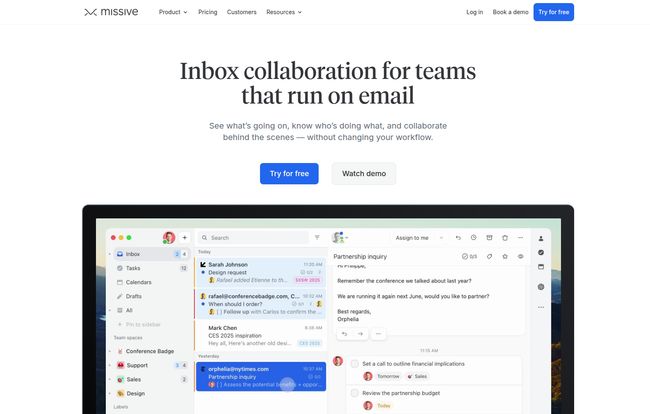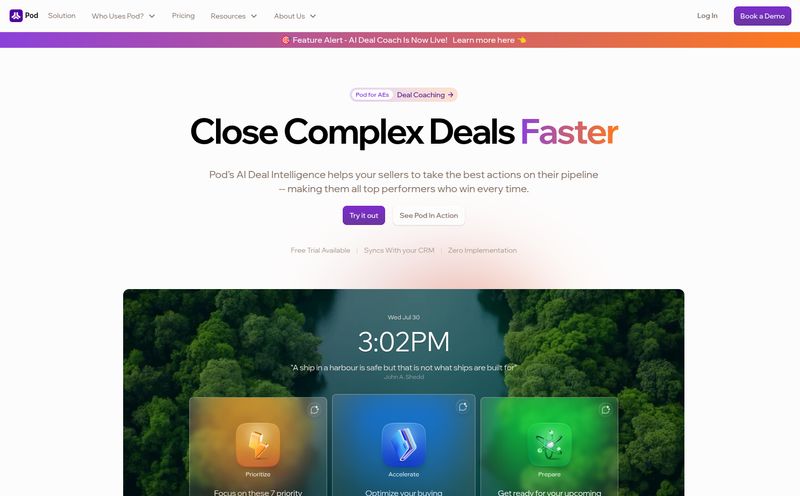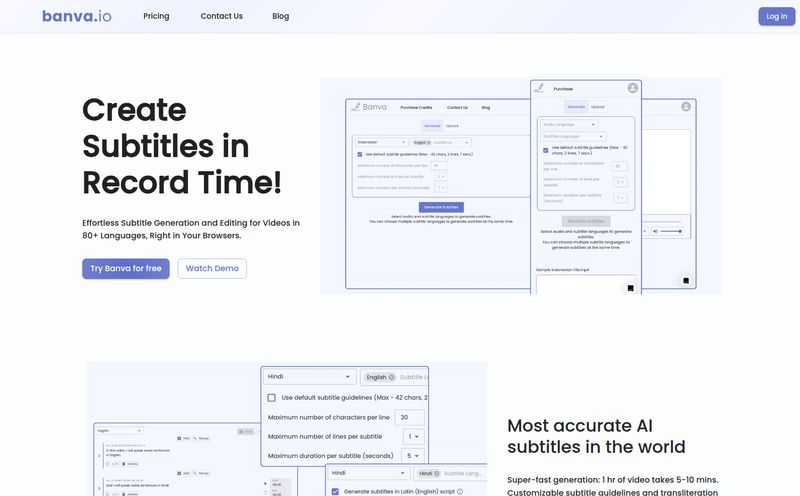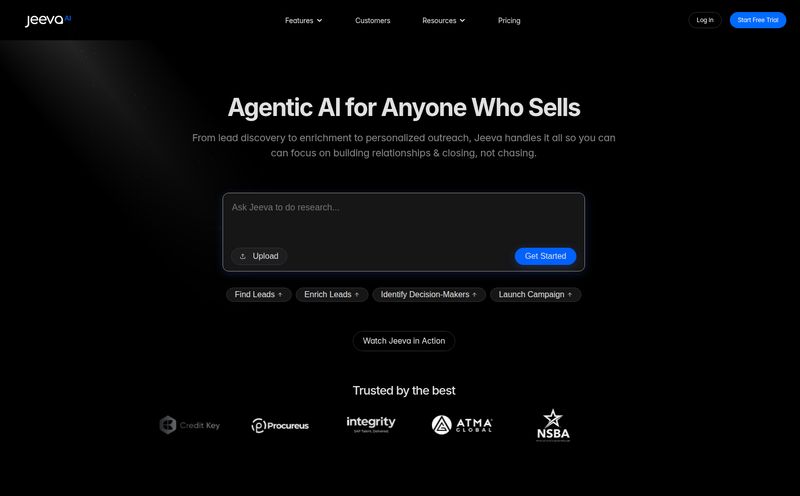The shared team inbox—you know the one, your `support@` or `info@` account—is often a special kind of digital purgatory. It’s a chaotic free-for-all of forwarded chains, duplicate replies, and that sinking feeling when you realize a critical customer email has been sitting unanswered for three days. We've all been there.
For years, we've tried to patch it up. We've used complex tagging systems, endless Slack threads that reference obscure emails, and CC'ing the entire company just to be safe. It’s exhausting. It feels like we're using duct tape and prayers to manage the very lifeblood of our business communication.
So when I see another tool promising to solve email, I’m skeptical. My browser has a whole bookmark folder overflowing with “solutions” that just ended up being another login to forget. But every now and then, something cuts through the noise. And lately, for me, that something has been Missive.
So, What Exactly is Missive Anyway?
Imagine if your email client, your team chat app, and your to-do list had a baby. That’s Missive. It’s not trying to kill email—a fool's errand if I've ever heard one—but rather to build a sane, collaborative layer on top of it. It takes all those external and internal conversations that are flying around in different apps and pulls them into one, single place.
Think of it as a central command center for your team's communication. Instead of shouting across the office (or, more likely, dropping a vague message in a chat channel) to ask “Hey, did anyone reply to that guy from Acme Corp?”, you just see it. You see the email, the person assigned to it, and any internal discussion about it, all in one neat little package. It's a simple concept, but the execution is what makes it feel a bit like magic.
The Features That Actually Move the Needle
Any platform can throw a long list of features on a pricing page. But which ones actually make a difference in your day-to-day grind? After kicking the tires on Missive, a few things really stood out.
Taming the Shared Inbox Beast
This is the core of it all. Missive transforms a chaotic shared inbox from a free-for-all into an organized workflow. When an email comes into your `support@` or `sales@` address, you can instantly assign it to a team member (or yourself). That person now owns that conversation. Everyone else can see it’s being handled, which completely eliminates the dreaded “oh, I thought you were replying” problem. You can leave comments for your teammates right on the email thread, invisible to the customer. It's like having a private sidebar conversation for every single email.
Let's Talk About the AI (The Smart Way)
Alright, I know. Every single tool on the planet has “AI” now. It's the new “synergy.” But Missive’s integration is genuinely useful. It’s built on OpenAI, and it can help you draft replies, summarize long and convoluted email chains into a few bullet points, or even translate messages. It's like having a hyper-efficient assistant who never needs a coffee break.
But here's the part that got my attention as a business owner: you can bring your own OpenAI API key. This is huge. Instead of paying a massive premium for “AI credits,” you just pay OpenAI for your actual usage, which is often pennies. It’s a transparent and fair approach that I wish more SaaS companies would adopt. It shows a confidence in their product beyond just marking up AI features.

Visit Missive
Chatting Where the Work Actually Happens
Context switching is a productivity killer. Jumping from your email to Slack to your project manager just to discuss one task is a massive drain. Missive gets this. It has team chat built right in. You can have general chat rooms for your team, sure, but the real power is in being able to start a chat discussion about a specific email. No more copying and pasting links. The conversation is attached directly to the source. It keeps everything organized and makes finding the history of a decision incredibly simple.
My Real-World Take: The Good and The... Honest
Look, no tool is perfect. In my years of running digital teams, I've seen it all. Here’s my no-fluff breakdown of Missive.
The real win is the newfound sense of calm. The mental overhead of wondering what’s falling through the cracks just… disappears. Knowing that every piece of communication has a clear owner and a clear status is a bigger relief than I expected. It’s that feeling of “inbox zero,” but for the entire team. The automations are also incredibly powerful once you set them up. You can create rules to automatically assign certain emails, add labels, or notify a specific chat room. It takes a little setup, but the time saved down the line is substantial.
Now, for the honest truth. There can be a bit of a learning curve. If your team is used to the wild west of a standard Gmail inbox, it takes a minute to adjust to a more structured workflow. It's not difficult, but it requires a conscious shift in habits. And while the pricing is very reasonable for what you get, it is a per-user cost. If you have a large team, you'll want to do the math. The reliance on an external service like OpenAI for AI features could also be a concern for some, though I personally see their bring-your-own-key model as a major plus.
So, How Much Does Missive Cost?
The pricing structure is pretty straightforward, which I appreciate. No hidden fees or confusing credit systems (outside of the optional AI). They have three main tiers, billed yearly for the best rates:
| Plan | Price (per user/month) | Who It's For |
|---|---|---|
| Starter | $14 | Small teams with straightforward needs. Gets you the core email, SMS, and chat collaboration features. |
| Productive | $24 | Growing teams that need more power. This is the sweet spot, adding integrations, rules, and automations. |
| Business | $36 | Larger teams with advanced security and reporting needs, like SSO and advanced analytics. |
For most small businesses and agencies, the Productive plan feels like the right place to be. It unlocks the automations that really make Missive sing. You can check their full pricing details on their official pricing page.
Who Is This Tool Actually For?
I wouldn't recomend Missive to a solo freelancer. It's overkill. But if you're a team of two or more people sharing an inbox, you are exactly who this was built for. It's perfect for:
- Customer Support Teams: Assigning tickets, collaborating on tough responses, and tracking resolution times.
- Sales Teams: Managing a `sales@` inbox, ensuring leads are followed up with, and keeping the team in the loop on deals.
- Agencies & Consultancies: Juggling multiple client communications without letting anything slip.
- Operations/Logistics Teams: Coordinating with suppliers and internal staff all from one place.
If your team's daily dance involves a lot of email and a lot of coordination, Missive could be a game-changer. If you're a huge enterprise with a custom-built Zendesk integration, it might not be the right fit.
Frequently Asked Questions
Can I use my existing email address like Gmail or Outlook?
Yes, absolutely. Missive connects securely to your existing email accounts (Gmail, Google Workspace, Outlook, Office 365, or any IMAP). You don't have to change your email address, it just becomes the new, smarter interface for it.
Is it difficult to switch my team over?
There's an adjustment period, as with any new tool. But it's pretty intuitive. The biggest step is getting your team to embrace assigning emails and commenting internally instead of forwarding. Missive offers onboarding help on their higher-tier plans to make it smoother.
Will my personal emails get mixed in with my team's?
No. You have full control. You can have your personal work inbox and your team inboxes all in the same app, but they are kept separate. Nothing from your personal account is shared unless you explicitly choose to share it.
How does it compare to tools like Front or Help Scout?
It plays in the same space but feels a bit more flexible to me. Front is a powerhouse but can feel very complex and is priced higher. Help Scout is fantastic for pure customer support but less geared towards general internal/external collaboration. Missive strikes a really nice balance between the two, with a more modern feel and the clever AI billing model.
The Final Verdict: Is Missive Worth Your Time?
After all is said and done, I'm genuinely impressed. It's one of teh few tools I’ve tested recently that lives up to its promise. It doesn’t try to reinvent the wheel; it just puts four good wheels on your car so the ride is smoother for everyone inside.
If your team is feeling the pain of a chaotic inbox and you're tired of communication getting lost between apps, I think you owe it to yourself to give Missive a try. It might just be the thing that finally brings order to your email chaos and gives you back a little piece of your sanity. And in this business, that's worth its weight in gold.
Reference and Sources
- Missive Official Website
- Missive Pricing Page
- Harvard Business Review - The High Cost of Context Switching



